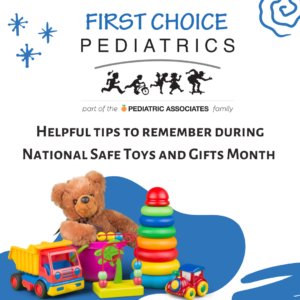Over the past few years, the CPSC (U.S Consumer Product Safety Commission) has put into place a system to ensure the safety of toys. The toys are tested by third party laboratories around the world, and examined thoroughly before arriving in the hands of children.
Why Do Toys go Through the Inspection and Testing Process?
There are two main objectives in the process:
- The main objective in inspecting and testing toys is identifying choking hazards. The most frequent safety hazard amongst toys is the ingestion of small parts.
- The second objective in the toy testing process is prevention of injury. This inspection includes a “cutting edge” test in which toys are placed on a rotating rod covered with adhesive paper. If the rotation yields no tears, the toy is counted as safe. The “sharp point” test, informs technicians by turning on a red LED light to indicate that there is a dangerously sharp point on the toy.
While we can place a significant amount of confidence in the testing of the CPSC, there are still some toys and other play objects that could cause harm to children. Below are a few tips to consider throughout the season of gifts and giving:
- Scooters, bikes, and riding toys: Make sure helmets and other protective gear is worn at all times.
- Beware of small toys and small toy parts! When swallowed, these can cause choking.
- High powered magnets should be avoided for all children (small magnets should be kept away from small children). If ingested, they can trap digestive tissue, preventing blood supply to that area, which can be life-threatening.
- Toys marketed for older children must be kept away from younger children. Age-labeling, describes the age of the children for which the toy is intended, and sometimes has discretionary components.
- Properly and immediately dispose of plastic wrappings or any toy packaging before they have any chance of falling into the hands of young children.
Sources:
https://child-familyservices.org/december-is-national-safe-toys-and-gifts-month/

















